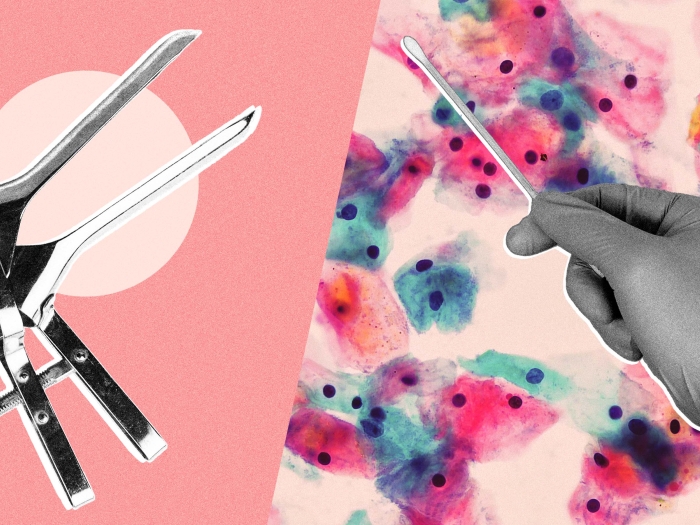Darker skin isn’t a reliable shield from potentially deadly skin cancer. Learn why everyone should protect themselves and get regular skin cancer screenings.
7:00 AM
Author |

Skin cancer doesn't discriminate.
"Anybody can get skin cancer, no matter the color of their skin," says Michigan Medicine dermatologist Kelly Cha, M.D., Ph.D.
ASK ALEXA: Add the Michigan Medicine News Break to your Flash Briefing
And dangers may vary: Black people, a 2016 study found, have lower rates of melanoma but are most likely to be diagnosed at a later stage. They also have a 69 percent five-year survival rate compared to 93 percent in whites, according to the American Cancer Society.
Poor awareness of skin cancer risk and delayed care often play a role.
"Skin cancer is usually straightforward to treat — and cure — in its early stages," Cha says. "Early detection is really important. But to detect skin cancer early, patients and their providers have to be aware of the warning signs.
"A spot that doesn't fit in with the others on your body, or one that is changing in appearance, won't heal, or causes you concern, needs to be checked out."
That's why all people, beyond taking preventive measures, should familiarize themselves with the warning signs of skin cancer, perform self-skin checks and get a yearly skin exam from a dermatologist or primary care physician.
Cha spoke about how skin cancer affects people of color.
Do people with darker skin tones get skin cancer?
Cha: UV radiation, which can come from the sun or from indoor tanning, causes most skin cancer. Pigment in skin functions as a mild sun protection factor (SPF) — so the more pigment, the higher the skin's natural SPF, and the better protection from the sun's rays.
MORE FROM MICHIGAN: Sign up for our weekly newsletter
Because of this, it's true that people with darker skin tones are less prone to skin cancer than people with lighter skin tones. However, the skin's natural SPF is still very low, and the sun isn't to blame for all skin cancer.
Anyone can get skin cancer, no matter how much pigment is naturally in their skin.
Are certain body parts more at risk for patients of color?
Cha: When people with darker skin tones have melanoma, considered the most dangerous skin cancer, it's more likely to be in places like the soles of the feet, the palms of the hands and under the nails.
It's important to realize that skin cancer can occur anywhere at all on the skin surface, in any patient. A worrisome spot should be checked out by a provider no matter where it is located.
Do certain ethnic groups see higher rates of certain types of skin cancer?
Cha: Squamous cell carcinoma is the most common skin cancer in patients with darker skin tones, and like melanoma in this population, it may occur more often in places that are not sun-exposed.
Basal cell carcinoma, which is nearly always related to sun exposure and occurs in sun-exposed areas, is second most common; it occurs more frequently in individuals with increasingly lighter skin tones.
Why do some ethnic groups have higher rates of undiagnosed skin cancer?
Cha: Unfortunately, for melanoma, statistics show that patients with darker skin tones are diagnosed with more advanced disease and have a lower survival rate than patients with lighter skin tones.
Part of the reason may be that patients with darker skin tones aren't aware of their risk for skin cancer, so they may be less likely to seek care early on, when skin cancer is typically easy to cure. Their providers also may not be as alert to signs of early skin cancer because of the relatively lower chance of skin cancer in this population.
What skin cancer misconceptions do you hear from patients of color?
Cha: Many people assume that sunscreen is not necessary unless they are prone to sunburns — and most sunscreen marketing seems to target patients with fair skin. We try to emphasize that sunscreen and other sun-protective behaviors can help decrease the risk of preventable skin cancers in all patients.
SEE ALSO: A Missing Link in Cancer Clinical Trials: Diverse Populations
Patients with darker skin tones may find that sunscreen products have typically been formulated with lighter-skinned patients in mind. Thankfully, the importance of products that suit patients with darker skin tones is being recognized, and companies are making better options available.
What steps can anyone, regardless of skin color, take to prevent skin cancer?
Cha: All patients can benefit from regular self-skin exams. Sun increases the risk of skin cancer, so decreasing direct exposure is recommended.
We advise sun protection in the form of protective clothing, broad-brimmed hats, sunglasses, and a broad-spectrum sunscreen with SPF 30 or greater applied generously and often.
What's the best way to use sunscreen?
Cha: Apply enough sunscreen to cover all exposed areas (about an ounce, or nearly a shot glass, for an adult). Reapply at least every two hours, and more often if swimming or sweating.
If you have questions or concerns about suspicious moles or need to have a skin check, contact a Michigan Medicine dermatology provider or call the Rogel Cancer Center's Cancer AnswerLine at 800-865-1125.

Explore a variety of healthcare news & stories by visiting the Health Lab home page for more articles.

Department of Communication at Michigan Medicine
Want top health & research news weekly? Sign up for Health Lab’s newsletters today!





